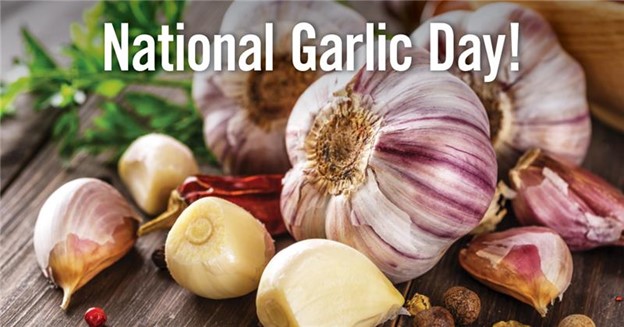
National Garlic Day
National Garlic Day may be one of the most underrated food holidays of the year. With a rich history dating back to the hunting and gathering days, garlic has remained a mainstay in our diets. In fact, the average person eats approximately two pounds of garlic a year, over 300 cloves, whether that’s for the health benefits or fear of vampires.
It is said that garlic was first used 10,000 years ago, after the last Ice Age. Chinese writings contained the first documented notes of garlics health benefits. Over time as humans evolved from hunters and gatherers to farmers, garlic evolved as well becoming popular in cuisines around the world, including Egypt, Greece, Rome, China, Mesopotamia, and India.
Allium Sativum, or garlic, is not native to North America. However, Allium Canadense, or wild garlic, does grow in the Eastern part of the continent. Yet, wild garlic is more like an onion than garlic, and should not be confused with true garlic. True garlic first came to North America with Polish, German, and Italian settlers. There’s also evidence that the Spanish Conquistadors brought garlic to the southwestern part of the United States.
Today there are hundreds of different types of garlic in North America and over a thousand worldwide. All with different sizes, shapes, features, and taste. All these varieties are broken down into two subspecies: softnecks and hardnecks.
Hardnecks grow best in cold climates and are found in Central and North America. They produce large, easily peeled cloves with big flavors. The eight groups of hardnecks are Porcelain, Rocambole, Purple Stripe, Glazed Purple Stripe, Marble Purple Stripe, Creole, Asiatic, and Turban.
Softnecks are the most widely grown garlics in the world and what you find in most North American supermarkets. The two groups of softnecks are Artichoke and Silverskin.
Who knew those little cloves of garlic could be so interesting? Time to add them to some cooking!
Source: https://www.garlicclubb.com/the-garlic-story.html
